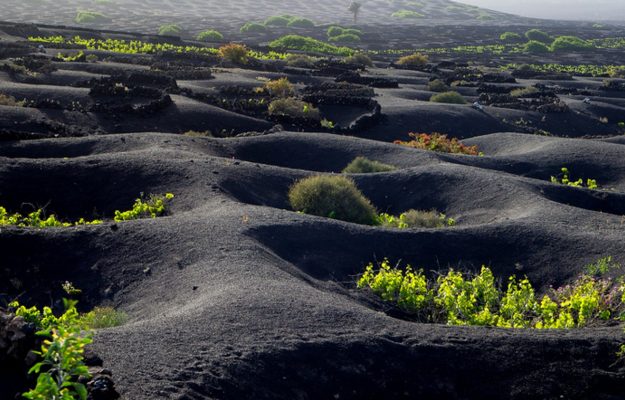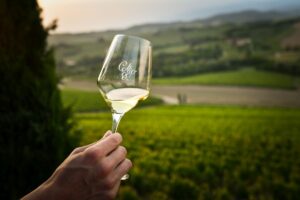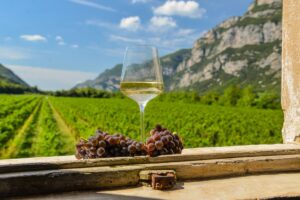Little snow, record heat, very little rain, and just after a few days of 2023, for agriculture - both Italian and European - is already a climate alert. Also in the vineyards, although the next harvest is, at least relatively, very far away. On the one hand, temperatures are concerning, as we wrote a few days ago, in southern France and, more broadly, in the Mediterranean basin, there is a risk of budding forward by weeks, exposing the vine to the risk of frost, as we have seen frequently in the last decade. The other critical front, on the other hand, is drought, because, without winter rainfall, the vineyards will face yet another summer of heat, as they have in previous years.
After all, although the vine is a resilient plant, “it suffers from drought just like the tomato plant”, evolutionary ecophysiologist Sylvain Delzon, a researcher at the University of Bordeaux and at the National Research Institute for Agriculture, reminded “Vitisphere”, Food & the Environment (Inrae). However, there are many differences between one variety and another, because while Pinot Noir, Merlot, Cabernet Sauvignon, and Sylvaner are particularly tolerant to drought, the disease-resistant varieties developed in France - Artaban, Floreal, Vidoc, and Voltis - and recognized by the Community Plant Variety Office of the EU, are instead the most sensitive to lack of water. A fundamental aspect, as we will see, Sylvain Delzon’s research exclusively concerned ungrafted vines, which were thus not grafted.
“It is difficult to say which varieties respond best to drought, but the rootstock plays an important role”, explains, to WineNews, professor Attilio Scienza, professor at the University of Milan and one of the leading experts in the world of viticulture. “The scion and the rootstock have an interactive behavior: the variety tolerates drought together with its rootstock, and the outcome is determined by the combination of the two. Water management and other dissipators have genetically economical varieties that have been selected and evolved in environments with very different climatic characteristics. When the rootstock intervenes, at the beginning of the twentieth century, it substantially changes the attitude of the different varieties”. And this is because “the brain of a plant, and therefore of the vine, is in the roots: by changing them, with the rootstock, we change the behavior of the variety. It is the roots that tell the aerial part how to behave: the leaf receives the signal from the outside, in terms of temperatures and other factors, therefore it is reworked at the root level and sent back to the leaves, which manage the water balance of the plant after received an input made of hormonal substances and through microRNAs, the true modulators of the behavior of the plant towards water stress”, explains more Professor Scienza. “It is a perfect example of epigenetics, which can be defined as a plant's ability to respond quickly to adverse conditions, such as a lack of water, through temporary modifications to its DNA, which adapts and adapts to external conditions, and its phenotype changes accordingly”.
This is why determining which variety responds best to drought is so difficult, even though “those with a greater ability to keep their stomata closed at night certainly have an advantage. 30% of the water lost by the vine during the growing season is due to nocturnal losses, which are entirely due to the variety. However, in comparison to the answers that the right rootstock can provide, this is a secondary aspect, for this, we must invest in research: we cannot simply change the variety, because there would be no Barolo without Nebbiolo, nor Chianti Classico without Sangiovese, and the relationship with tradition and with the territories and their historic vines cannot be lost”.
In fact, if we want something simpler, even banal, there is another option: irrigation. But it is an answer that brings with it an indefinite number of problems to overcome. “I believe it is an unrealistic response to the drought problem, because water is scarce for everyone, it is expensive, and it must be transported and stored. It would require massive investments, and it might only be worthwhile in the vineyards of Veneto, Friuli, Trentino Alto Adige, and Sicily. There are not many areas in Italy that are suitable for irrigation, especially in hilly areas, where water is rare and such a solution is particularly expensive. Furthermore, the rootstock allows you to not only absorb more water but also manage the plant and its ability to save water. There are various degrees of affinity between rootstock and variety: the one between scion and rootstock is an interactive behavior that produces different results; if a weaker rootstock is required for a more vigorous variety, a stronger rootstock is required for a less vigorous variety. Then there’s the soil variable: the only option we have is to experiment with the behavior of varieties and rootstocks in different soil and climate conditions; making a priori predictions is impossible; an empirical approach is required”, concludes professor Attilio Scienza. “In general, the more vigorous varieties are more drought resistant because they can explore the soil more and go deeper in search of water”.
Copyright © 2000/2025
Contatti: info@winenews.it
Seguici anche su Twitter: @WineNewsIt
Seguici anche su Facebook: @winenewsit
Questo articolo è tratto dall'archivio di WineNews - Tutti i diritti riservati - Copyright © 2000/2025








































































































































































































